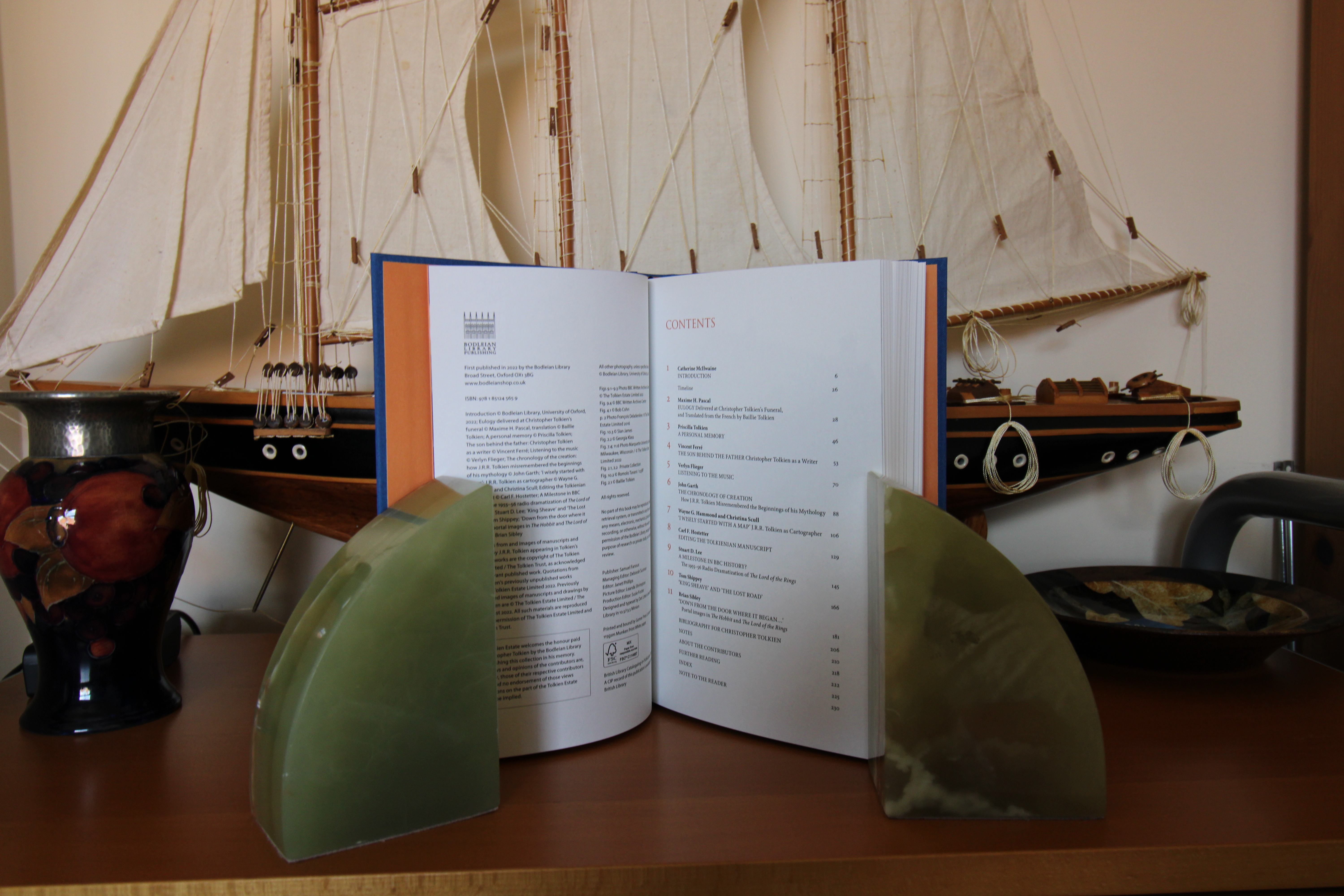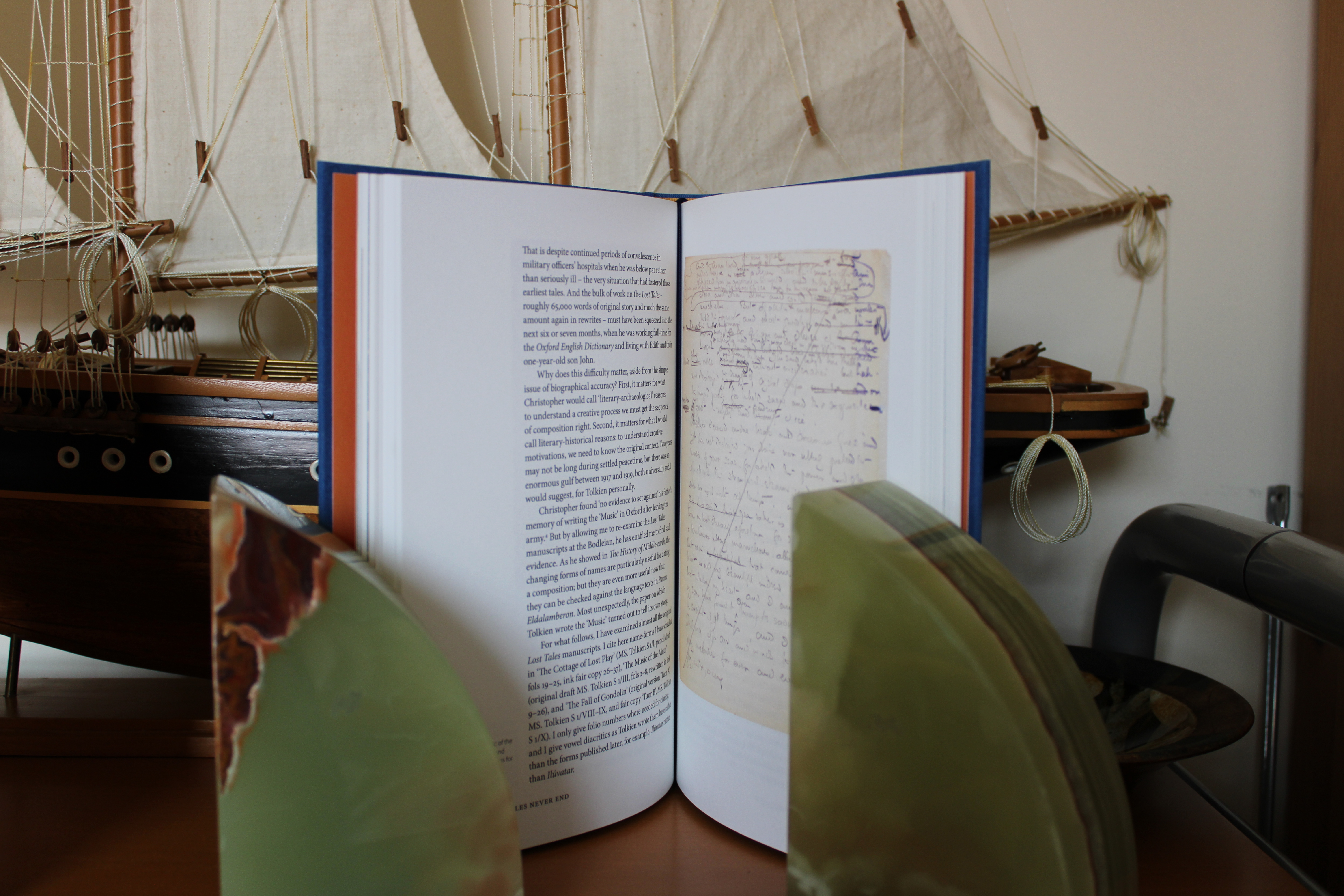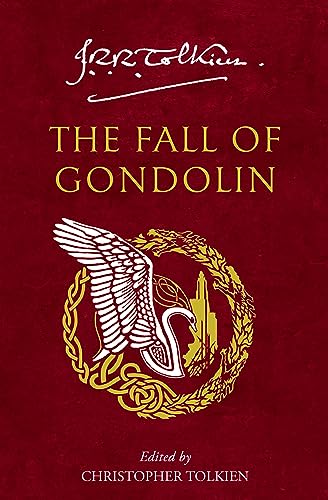Books and other printed materials >> TCG Review - The Great Tales Never End: Essays in Memory of Christopher Tolkien
TCG Review - The Great Tales Never End: Essays in Memory of Christopher Tolkien
24 Jun, 2022
(edited)
2022-6-24 4:30:46 AM UTC
2022-6-24 4:30:46 AM UTC
The Great Tales Never End: Essays in Memory of Christopher Tolkien

Richard Ovenden OBE is Bodley’s Librarian. Catherine McIlwaine is the Tolkien Archivist at the Bodleian Library, University of Oxford.
Includes essays by: Maxime H. Pascal; Priscilla Tolkien; Vincent Ferré; Verlyn Flieger; John Garth; Wayne G. Hammond and Christina Scull; Carl F. Hostetter; Stuart D. Lee; Tom Shippey; Brian Sibley
- Hardback
- 232 pages, 234 x 156 mm
- 51 colour illustrations
- ISBN: 9781851245659
- Publication 24th June 2022(UK) 2nd September 2022(US)
Review by Urulókë, Mr. Underhill and Trotter
This review is based on review copies very kindly sent to use by Bodleian Publishing. The opinions are our own.






Introduction - Catherine McIlwaine
Urulókë wrote:
In Catherine McIlwaine's introduction, we are given a brief but entertaining and illuminating glimpse into the life of Christopher from childhood through his passing in 2020. We also get some wonderful glimpses of JRR Tolkien as well - one of my favorites is the invitation to Christopher's Coming of Age party in 1945, which offers the following guidance: "Carriages at midnight. Ambulances at 2 a.m. Wheelbarrows at 5 a.m. Hearses at daybreak." Another interesting tidbit mentioned is that in 1967 not only did JRR Tolkien name Christopher literary executor, but also (pre-emptively) co-author of 'The Silmarillion'.
Trotter wrote:
Probably my favourite picture of J.R.R. and Christopher at the start of the book. A comprehensive overview of Christopher’s life and career. A fantastic invite to 21st Birthday “Carriages at Midnight, Ambulances at 2am, Wheelbarrows at 5am and Hearses at daybreak”
Timeline
Trotter wrote:
Timeline from 1924-2020, really useful publication information.
Eulogy - Maxime H. Pascal
Urulókë wrote:
Maxime Pascal writes a beautiful eulogy for Christopher (translated into English by his wife, Baillie) that describes his family life, his writings, and his friendships and loves.
Trotter wrote:
This was delivered at Christopher Tolkien's funeral, in French and English translation, very moving and heart-felt.
Du monde de Tolkien, les livres
fondateurs avaient été édités
Ils prospéraient tels de très grands
arbres, mais c’est toi qui a révélé la forêt
Of the world of Tolkien, the founding
books had been published
They prospered like tall trees, but it is you
who revealed the forest
A Personal Memory - Priscilla Tolkien
Urulókë wrote:
Priscilla gives us a generous handful of memories from growing up with Christopher - little glimpses into activities and experiences they shared over the decades - it feels like a warm Sunday afternoon sharing tea and conversation with Priscilla as she remembers her closest brother.
Trotter wrote:
Priscialla gives us a different view on her brother as a member of her family. I really liked the anecdote about when Christopher returned from South Africa, he was able to bring food which was very important during rationing.
The Son Behind the Father: Christopher Tolkien as a Writer - Vincent Ferre
Urulókë wrote:
Vincent Ferré's piece, "The Son Behind the Father" looks at Christopher's publications and statements he made about them, and pulls together a thread showing that Christopher was a literary author in his own right, and very much to the benefit of his father's books that he worked on, not just as an editor of those books.
Trotter wrote:
Describes Christopher’s role as a storyteller, then as a literary critic, fiction writer. Christopher was very humble about his role and Vincent shows that he should not have been.
MrUnderhill wrote:
(quote from Ferré) "Too often in the mainstream critical discourse on The Silmarillion, only the last word (‘edited’) has remained. Yet in his foreword to Unfinished Tales (published after The Silmarillion, in 1980), Christopher Tolkien placed small stones that the reader (as in the well-known fairy-tale) may find in the huge forest of texts: ‘I have indeed treated the published form of The Silmarillion as a fixed point of reference of the same order as the writings published by my father himself, without taking into account the innumerable “unauthorised” decisions between variants and rival versions that went into its making."
Listening to the Music - Verlyn Flieger
Urulókë wrote:
Verlyn Flieger makes a fascinating connection between Sam and the Music of the Ainur, and how The Lord of the Rings ended up being the end-piece to Tolkien's entire legendarium.
Trotter wrote:
Discusses the publication of the Lord of the Rings and the difficulties with the Silmarillion and the musical motif within the works, which has come out through Christopher’s work on his fathers notes.
MrUnderhill wrote:
(quote fro Flieger) "Christopher Tolkien’s serial publication from 1977 to 2018 of his father’s entire legendarium has given us that larger framework. We now have the interior history of Tolkien’s fictive world from its lofty creation in celestial music to Sam Gamgee’s homely return to Bag End at the end of the Third Age."
The Chronology of Creation: How J.R.R. Tolkien Misremembered the Beginnings of his Mythology - John Garth
Urulókë wrote:
John Garth's "The Chronology of Creation" follows some of his research into the restricted "Lost Tales" materials in the Bodleian, in his ongoing efforts to date when these stories were written. It is extremely detailed and well written, worth re-reading as it ties together neatly the genesis of Tolkien's legendarium and answers some perplexing riddles in what was written when.
Trotter wrote:
John looks at the dating of the writing of the Book of Lost Tales and presents compelling evidence that Tolkien misremembered the date and that it was earlier than he stated.
MrUnderhill wrote:
(quote from Garth) “All the data mentioned above can indeed be squared with Tolkien’s recollection, but not straightforwardly. It demands that we picture him repeatedly making creative decisions in 1917 and then undoing them in 1919, only to revert to his first position thereafter.”
'I Wisely Started with a Map': J.R.R. Tolkien as Cartographer - Wayne G. Hammond and Christina Scull
Urulókë wrote:
Wayne G. Hammond and Christina Scull's essay on Tolkien's maps is my favorite in the book - a great chronological (and topographical) look at Tolkien's map making from the earliest drafts of the legendarium, and through The Hobbit and The Lord of the Rings - including Christopher's essential contributions to the cartography of Middle-earth.
Trotter wrote:
A wonderful essay on Tolkien as a map-maker, maps for the Silmarillion, The Hobbit and the Lord of the Rings and the immense help that Christopher gave for the maps for the Lord of the Rings as Tolkien could not finish them for publication. Christopher spent 24 hours continuously on the large scale map of Rohan, Gondor and Mordor to meet the deadlines.
MrUnderhill wrote:
(quote from Hammond and Scull) "Unusually among his maps, Tolkien oriented the final Thror’s Map with east at the top, probably because it now needed to be (as an endpaper spread) horizontal instead of vertical, rather than as a nod to the pre-fifteenth-century mappamundi tradition (in which east was most significant, as the location of the Earthly Paradise). In a prefatory note for the third (1966) edition of The Hobbit, Tolkien explained that eastward orientation was ‘usual in dwarf-maps’."
Editing the Tolkienian Manuscript - Carl F. Hostetter
Urulókë wrote:
Carl Hostetter's essay on the challenges and rewards of decrypting Tolkien's handwriting - a task at which Christopher was a master, and Carl not far behind, but even JRR Tolkien himself couldn't always decipher his own handwriting, as shown in one of the four fantastic examples published here for the first time.
Trotter wrote:
Carl’s essay is on the task of deciphering Tolkien’s manuscripts and the expertise that Christopher gained in this area. Some manuscripts are shown, and Carl expands on how they were deciphered. This is really useful for anyone who intends to try and decipher Tolkien’s handwriting from manuscripts or letters.
MrUnderhill wrote:
(quote from Hostetter) "Tolkien’s extant creative writings span seven decades. In that time, not only did his conceptions of his mythology change, sometimes radically, but so too did his literary style, his tone, his handwriting, and even his choice of writing implements – e.g. nib-pen versus pencil versus (from the 1950s on) ball-point pen – and his sources of paper. Only very rarely would Tolkien himself indicate when any given text or part thereof was written."
A Milestone in BBC History? The 1955-56 Radio Dramatization of The Lord of the Rings - Stuart D. Lee
Urulókë wrote:
Stuart D. Lee writes about The first BBC Radio production of The Lord of the Rings, that was aired in the 1950s - prior to this excellent essay, it was only scant mention in Tolkien's letters that we had available to us, but Lee was able to find significant material in the BBC archives for this essay.
Trotter wrote:
Stuart looks at the 1955-56 BBC dramatization of the Lord of the Rings and addresses the thorny subject of adapting Tolkien for performances. Tolkien did adapt part of the book for the Radio Series and was very frustrated by the small amount of broadcast time available and the huge amount of cutting that was then involved. So much was cut of the second series that it no longer made narrative sense.
King Sheave and The Lost Road - Tom Shippey
Urulókë wrote:
Tom Shippey writes "'King Sheave' and 'The Lost Road'" where he delves into the framework that Tolkien was struggling with for his time travel/historical narratives published in volumes 5 (The Lost Road) and 8 (Sauron Defeated) of The History of Middle-earth by Christopher Tolkien. A fascinating look at a less-well known area of Tolkien's creative writing.
Trotter wrote:
Tom discusses Tolkien’s poem King Sheave which is published in the HoMe volume “The Lost Road”
Down from the door where it began... Portal images in The Hobbit and The Lord of the Rings - Brian Sibley
Urulókë wrote:
Brian Sibley closes out the essays with "Down From the Door Where it Began...", looking at all of the doors and portals that Tolkien uses in The Hobbit and The Lord of the Rings. There are a lot of doors that Tolkien makes use of, and Sibley does an admirable job (and well illustrated) taking us through them.
Trotter wrote:
Brian looks at Door’s and Portals in the Hobbit and The Lord of the Rings. An example in the Hobbit is that the story starts and ends at Bag-end, the door is a key element as it appears in the Hill drawing at the start of the book and The Hall at Bag-End at the end of the book.
Bibliography for Christopher Tolkien
Trotter wrote:
Bibliography covers books, Articles, notes, interviews, Maps, Audio and Film
A great treat at the end of the book is a reproduction of Christopher’s father’s inscription in his ROTK in Quenya.

‘With this the long tale ends and my extended long day is complete, dear [one] of sons I give it to be read with love’













 1
1 62
62